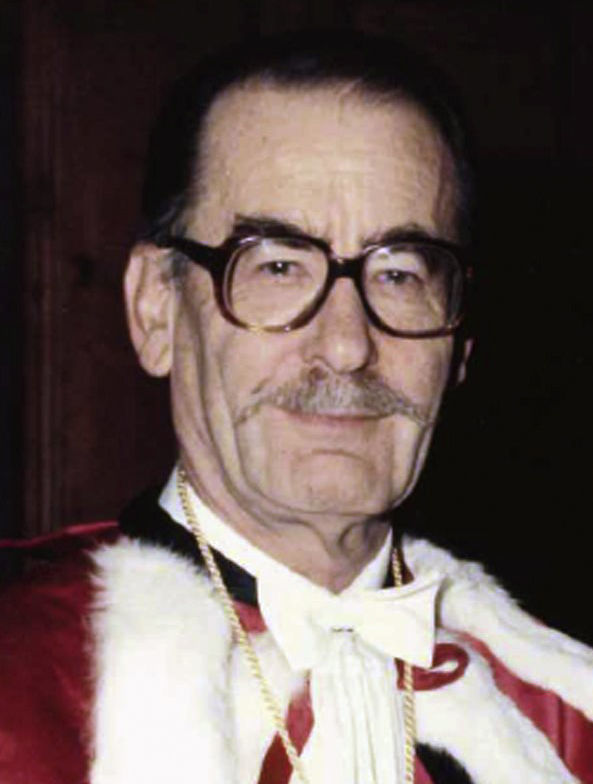In January this year, the French cardiologist Paul Puech passed away, aged 92, after a long illness. For those of us who have been cardiologists for more than 50 years, the presence of Paul Puech in a scientific meeting in the 1970s-90s was synonymous with scientific standards and human grace.
Paul Puech was an atypical French cardiologist. Born in Montpellier in 1925, he had always been fascinated by all things Latin: this meant that he adored Spain and all of Latin America; he loved the bulls and he loved horses—in fact, he was a great equestrian and enjoyed his pastime at his residence “La Camargue”, in Montpellier. In the 1950s he was the first European cardiologist to realize the huge potential of the research and teaching offered by the National Institute of Cardiology of Mexico; this led him to attend for training. He stayed there for 2 years, in that fine, pioneering institute founded by the master Ignacio Chávez, working principally with the team led by Demetrio Sodi Pallarés, and where other great cardiologists such as Tranchesi, Pilegi and Peñaloza trained in their day.
The fruits of his time there included the publication of several pioneering works, notably the study of the different electrophysiological characteristics of normal and pathological atrial activity, which included, among other things, a description of the possible coexistence of atrial fibrillation and flutter at the same time in the same individual, as well as the first description of a case of interatrial block with retrograde activation of the left atrium, a subject to which I later deeply devoted myself. Many of his works, published in Archives des Maladies du Coeur et des Vaisseaux, were brought together in 1956 in a wonderful monograph, edited by Masson & Editeurs, titled “L’ativité électrique auriculaire: normale et pathologique”. He also published pioneering works, using recordings of the bundle of His, of the different types of atrioventricular block and their location. He was, furthermore, one of the first cardiologists to comprehend the future importance of atrial fibrillation and its clinical complications, such as emboli and heart failure.
I met him in the 1970s when he was a famous figure in various parts of the world. He took part in a host of meetings and conferences, above all in Latin America, but also in France, Italy, Spain and Portugal. His voice and his opinion were always the most eagerly anticipated due to their marvelous content and his masterful presentation style. Over the years, many cardiologists, particularly from Latin America, had the good fortune to share in his scientific activities and friendship: Carlos Ribeiro, Fernando De Padua, and Mario Cerqueira, from Portugal; Eligio Piccolo and Francesco Fundanello, from Italy; Philippe Coumel and Robert Slama, from France; Juan Cosín from Spain; and Mauricio Rosenbaum and Marcelo Elizari, from Argentina.
Alas, Paul lost his wonderful wife Geneviève. Added to this was the later death of a son and a grandson, all of which caused him great sorrow. Now, finally, he has left us, his daughters Anne-France, Marie-Caroline, and Marie-Laure and their respective families, and his friends; his death has left us with a hole that will be very difficult to fill.
He was an extraordinary personality, a great scientist, and above all, as I have said, in love with Spain and everything Latin. More than anyone, he contributed to the Spanish cardiology of the 1970s-90s and its worldwide dissemination, and he honored me personally with his friendship.
I had the fortune to talk to him for many hours about medicine and also about life, and he was undoubtedly one of the people who has contributed most to my education on cardiology and on human nature. With time, the friendship between our two families became cherished. He encouraged me to start my collaboration with the International Society of Cardiology, of which I was president, and which later, under my presidency, became the World Heart Federation. For all his great merits, in 1991, my university, the Universitat Autònoma de Barcelona, awarded him an honorary doctorate. In the photograph from the ceremony that accompanies this article you can see his imposing image.
He had many disciples around the world, who attended Montpellier drawn by his charisma, among them José Brugada, my son Toni Bayés-Genís, and Pedro Iturralde, from México.
Paul, rest assured that the mark you have left as a researcher and your abilities as a teacher, as well as your extraordinary behavior as a human being will last forever in the cardiology world, especially in Spain and throughout Latin America.

